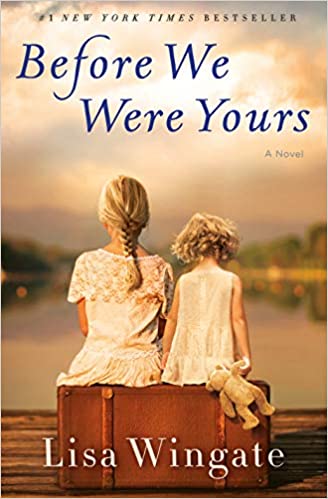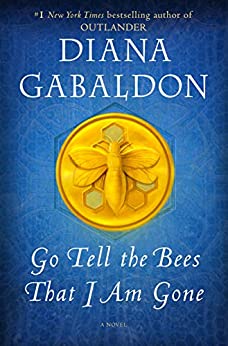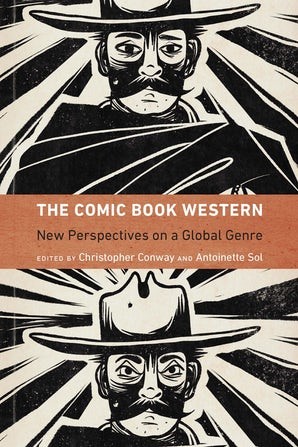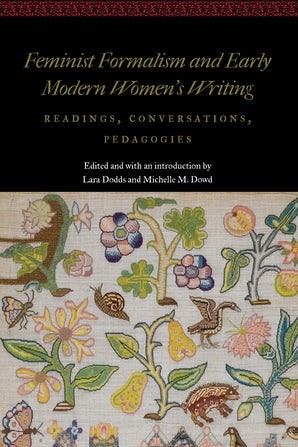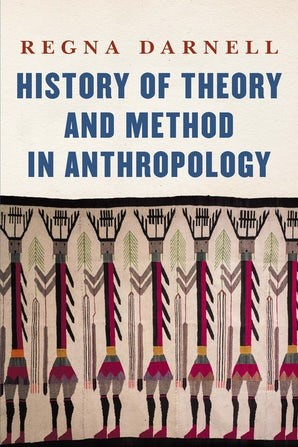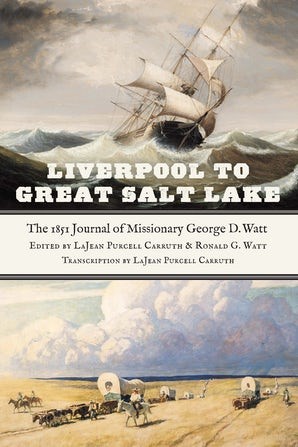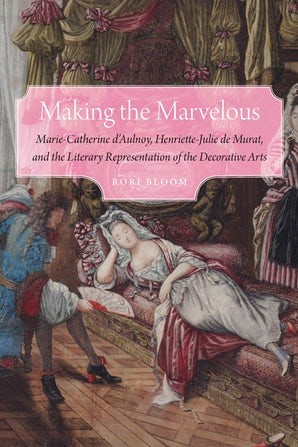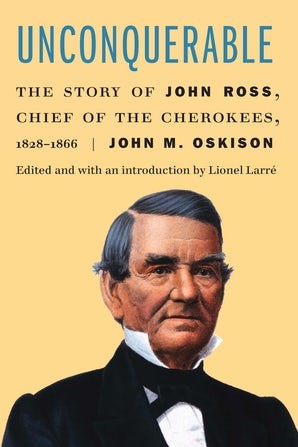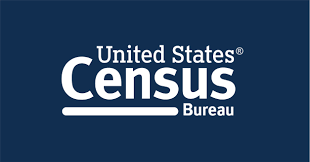Search the Blog
Categories
- Books & Reading
- Broadband Buzz
- Census
- Education & Training
- General
- Grants
- Information Resources
- Library Management
- Nebraska Center for the Book
- Nebraska Memories
- Now hiring @ your library
- Preservation
- Pretty Sweet Tech
- Programming
- Public Library Boards of Trustees
- Public Relations
- Talking Book & Braille Service (TBBS)
- Technology
- Uncategorized
- What's Up Doc / Govdocs
- Youth Services
Archives
Subscribe
Author Archives: Mary Sauers
What’s Up Doc? New State Agency Publications at the Nebraska Library Commission
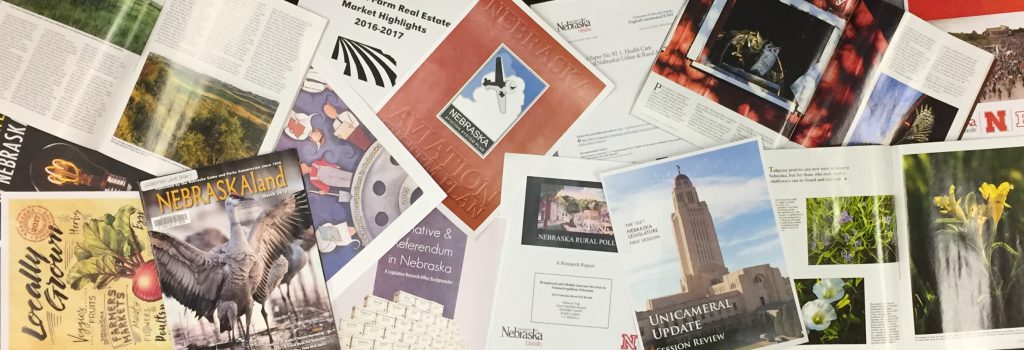
New state agency publications have been received at the Nebraska Library Commission for January and February, 2023. Included are reports from the Nebraska Department of Agriculture, the Nebraska Courts System, the Nebraska Game & Parks Commission, the Nebraska Department of Labor, and new books from the University of Nebraska Press, to name a few.
Most items, except the books from the University of Nebraska Press, are available for immediate viewing and printing by clicking on the highlighted link above, or directly in the .pdf below. You can read synopses of the books received from the University of Nebraska Press in the Book Briefs blogposts.
The Nebraska Legislature created the Nebraska Publications Clearinghouse in 1972 as a service of the Nebraska Library Commission. Its purpose is to collect, preserve, and provide access to all public information published by Nebraska state agencies. By law (State Statutes 51-411 to 51-413) all Nebraska state agencies are required to submit their published documents to the Clearinghouse. For more information, visit the Nebraska Publications Clearinghouse page, contact Mary Sauers, Government Information Services Librarian; or contact Bonnie Henzel, State Documents Staff Assistant.
Book Briefs: New University of Nebraska Press Books at the Nebraska Publications Clearinghouse
The Nebraska Publications Clearinghouse receives documents every month from all Nebraska state agencies, including the University of Nebraska Press (UNP). Each month we will be showcasing the UNP books that the Clearinghouse has received.
UNP books, as well as all Nebraska state documents, are available for checkout by libraries and librarians for their patrons.
Here are the UNP books the Clearinghouse received in January and February, 2023:
A Concise Dictionary of Nakoda (Assiniboine) by Vincent Collette; Series: Studies in the Native Languages of the Americas
A Concise Dictionary of Nakoda (Assiniboine) brings to life the hopes and dreams of Nakoda (Assiniboine) elders. The Nakoda language—also known as Assiniboine, an Ojibwe ethnonym meaning “Stone Enemy”—is an endangered Siouan language of the Mississippi Valley branch spoken in southern Saskatchewan and northern Montana. Nakoda belongs to the Dakotan dialectal continuum, which includes Dakota, Lakota, and Stoney.
The fieldwork for this project was done between 2018 and 2020 with Elder Wilma Kennedy, one of the last fluent speakers living in Carry The Kettle, Saskatchewan. The volume brings together many valuable stories and colorful expressions as well as archaic words that do not appear in any known sources of the language. Particular care was taken to obtain the derivatives of many verbal stems, along with sentences for many of the verbs, adverbs, and other function words.
More than a list of words, this volume contains definitions and standard spellings along with a wealth of grammatical information. The dictionary contains more than 6,000 Nakoda-to-English translations, more than 3,000 English-to-Nakoda translations, and more than 1,500 sentences that will be extremely helpful for those interested in mastering the different usages of words and the various sentence patterns of the language. This dictionary of Nakoda can be used by anyone interested in learning or would like to refresh their knowledge of the language.
A Maverick Boasian : The Life and Work of Alexander A Goldenweiser by Sergei Kan; Series: Critical Studies in the History of Anthropology
A Maverick Boasian explores the often contradictory life of Alexander Goldenweiser (1880–1940), a scholar considered by his contemporaries to be Franz Boas’s most brilliant and most favored student. The story of his life and scholarship is complex and exciting as well as frustrating. Although Goldenweiser came to the United States from Russia as a young man, he spent the next forty years thinking of himself as a European intellectual who never felt entirely at home. A talented ethnographer, he developed excellent rapport with his Native American consultants but cut short his fieldwork due to lack of funds. An individualist and an anarchist in politics, he deeply resented having to compromise any of his ideas and freedoms for the sake of professional success. A charming man, he risked his career and family life to satisfy immediate needs and wants.
A number of his books and papers on the relationship between anthropology and other social sciences helped foster an important interdisciplinary conversation that continued for decades after his death. For the first time, Sergei Kan brings together and examines all of Goldenweiser’s published scholarly works, archival records, personal correspondences, nonacademic publications, and living memories from several of Goldenweiser’s descendants.
Goldenweiser attracted attention for his unique progressive views on such issues as race, antisemitism, immigration, education, pacifism, gender, and individual rights. His was a major voice in a chorus of progressive Boasians who applied the insights of their discipline to a variety of questions on the American public’s mind. Many of the battles he fought are still with us today.
Aquaman and the War Against Oceans by Ryan Poll; Series: Encapsulations: Critical Comics Studies
The reimagining of Aquaman in The New 52 transformed the character from a joke to an important figure of ecological justice. In Aquaman and the War against Oceans, Ryan Poll argues that in this twenty-first-century iteration, Aquaman becomes an accessible figure for charting environmental violences endemic to global capitalism and for developing a progressive and popular ecological imagination.
Poll contends that The New 52 Aquaman should be read as an allegory that responds to the crises of the Anthropocene, in which the oceans have become sites of warfare and mass death. The Aquaman series, which works to bridge the terrestrial and watery worlds, can be understood as a form of comics activism by its visualizing and verbalizing how the oceans are beyond the projects of the “human” and “humanism” and, simultaneously, are all-too-human geographies that are inextricable from the violent structures of capitalism, white supremacy, and patriarchy. The New 52 Aquaman, Poll demonstrates, proves an important form of ocean literacy in particular and ecological literacy more generally.
Black Gun, Silver Star : the Life and Legend of Frontier Marshal Bass Reeves, New edition, by Art T. Burton
In The Story of Oklahoma, Deputy U.S. Marshal Bass Reeves appears as the “most feared U.S. marshal in the Indian country.” That Reeves was also an African American who had spent his early life enslaved in Arkansas and Texas made his accomplishments all the more remarkable. Black Gun, Silver Star sifts through fact and legend to discover the truth about one of the most outstanding peace officers in late nineteenth-century America—and perhaps the greatest lawman of the Wild West era.
Bucking the odds (“I’m sorry, we didn’t keep Black people’s history,” a clerk at one of Oklahoma’s local historical societies answered one query), Art T. Burton traces Reeves from his days of slavery to his Civil War soldiering to his career as a deputy U.S. marshal out of Fort Smith, Arkansas, when he worked under “Hanging Judge” Isaac C. Parker. Fluent in Creek and other regional Native languages, physically powerful, skilled with firearms, and a master of disguise, Reeves was exceptionally adept at apprehending fugitives and outlaws and his exploits were legendary in Oklahoma and Arkansas.
In this new edition Burton traces Reeves’s presence in the national media of his day as well as his growing modern presence in popular media such as television, movies, comics, and video games.
Breaking the Silence : Anthology of Liberian Poetry edited by Patricia Jabbeh Wesley; Series: African Poetry Book
Breaking the Silence is the first comprehensive collection of literature from Liberia since before the nation’s independence. Patricia Jabbeh Wesley has gathered work from the 1800s to the present, including poets and emerging young writers exploring contemporary literary traditions with African and African diaspora poetry that transcends borders. In this collection, Liberia’s founding settlers wrestle with their identity as African free slaves in the homeland from which their ancestors were captured, and writers of the early twentieth and twenty-first centuries find themselves navigating a landscape at odds with itself.
From poets of Liberia’s past to young writers of the present, the contributors to this volume celebrate the beauty of their nation while mourning the devastation of a long, bloody civil war.
Dog on Fire by Terese Svoboda; Series: Flyover Fiction
Out of a Shakespearean-wild Midwest dust storm, a man rises. “Just a glimpse of him,” says his sister; “every inch of him,” says his guilt-filled lover. “Close your eyes,” says his nephew. “What about it?” asks his father. The cupboard is filled with lime Jell-O, and there are aliens, deadly kissing, and a restless, alcoholic mother who carries a gun. “Every family is this normal,” insists the narrator. “Whoever noticed my brother, with a family as normal as this?” the beleaguered sister asks. Against the smoky prairie horizon and despite his seizures, a brother builds a life. Imbued with melancholy cheer, Dog on Fire unfolds around a family’s turmoil, past loves, and a mysterious death.
Hydronarratives : water, Environmental Justice, and a Just Transition by Matthew S. Henry
The story of water in the United States is one of ecosystemic disruption and social injustice. From the Standing Rock Indian Reservation and Flint, Michigan, to the Appalachian coal and gas fields and the Gulf Coast, low-income communities, Indigenous communities, and communities of color face the disproportionate effects of floods, droughts, sea level rise, and water contamination.
In Hydronarratives Matthew S. Henry examines cultural representations that imagine a just transition, a concept rooted in the U.S. labor and environmental justice movements to describe an alternative economic paradigm predicated on sustainability, economic and social equity, and climate resilience. Focused on regions of water insecurity, from central Arizona to central Appalachia, Henry explores how writers, artists, and activists have creatively responded to intensifying water crises in the United States and argues that narrative and storytelling are critical to environmental and social justice advocacy. By drawing on a wide and comprehensive range of narrative texts, historical documentation, policy papers, and literary and cultural scholarship, Henry presents a timely project that examines the social movement, just transition, and the logic of the Green New Deal, in addition to contemporary visions of environmental justice.
Mine Mine Mine by Uhuru Portia Phalafala; Series: African Poetry Book
Mine Mine Mine is a personal narration of Uhuru Portia Phalafala’s family’s experience of the migrant labor system brought on by the gold mining industry in Johannesburg, South Africa. Using geopoetics to map geopolitics, Phalafala follows the death of her grandfather during a historic juncture in 2018, when a silicosis class action lawsuit against the mining industry in South Africa was settled in favor of the miners.
Phalafala ties the catastrophic effects of gold mining on the miners and the environment in Johannesburg to the destruction of Black lives, the institution of the Black family, and Black sociality. Her epic poem addresses racial capitalism, bringing together histories of the transatlantic and trans-Indian slave trades, of plantation economies, and of mining and prison-industrial complexes. As inheritor of the migrant labor lineage, she uses her experience to explore how Black women carry intergenerational trauma of racial capitalism in their bodies and intersects the personal and national, continental and diasporic narration of this history within a critical race framework.
Segregation Made Them Neighbors : an Archaeology of Racialization in Boise, Idaho by William A. White III; Series: Historical Archaeology of the American West
Segregation Made Them Neighbors investigates the relationship between whiteness and nonwhiteness through the lenses of landscapes and material culture. William A. White III uses data collected from a public archaeology and digital humanities project conducted in the River Street neighborhood in Boise, Idaho, to investigate the mechanisms used to divide local populations into racial categories. The River Street Neighborhood was a multiracial, multiethnic enclave in Boise that was inhabited by African American, European American, and Basque residents. Building on theoretical concepts from whiteness studies and critical race theory, this volume also explores the ways Boise’s residents crafted segregated landscapes between the 1890s and 1960s to establish white and nonwhite geographies.
White describes how housing, urban infrastructure, ethnicity, race, and employment served to delineate the River Street neighborhood into a nonwhite space, an activity that resulted in larger repercussions for other Boiseans. Using material culture excavated from the neighborhood, White describes how residents used mass-produced products to assert their humanity and subvert racial memes.
By describing the effects of racial discrimination, real-estate redlining, and urban renewal on the preservation of historic properties in the River Street neighborhood, Segregation Made Them Neighbors illustrates the symbiotic mechanisms that also prevent equity and representation through historic preservation in other cities in the American West.
Speculative Wests : Popular Representations of a Region and Genre by Michael K. Johnson; Series: Postwestern Horizons
Looking across the cultural landscape of the twenty-first century, its literature, film, television, comic books, and other media, we can see multiple examples of what Shelley S. Rees calls a “changeling western,” what others have called “weird westerns,” and what Michael K. Johnson refers to as “speculative westerns”—that is, hybrid western forms created by merging the western with one or more speculative genres or subgenres, including science fiction, fantasy, horror, and alternate history.
Speculative Wests investigates both speculative westerns and other speculative texts that feature western settings. Just as “western” refers both to a genre and a region, Johnson’s narrative involves a study of both genre and place, a study of the “speculative Wests” that have begun to emerge in contemporary texts such as the zombie-threatened California of Justina Ireland’s Deathless Divide (2020), the reimagined future Navajo nation of Rebecca Roanhorse’s Sixth World series (2018–19), and the complex temporal and geographic borderlands of Alfredo Véa’s time travel novel The Mexican Flyboy (2016). Focusing on literature, film, and television from 2016 to 2020, Speculative Wests creates new visions of the American West.
Two Open Doors in a Field by Sophie Klahr; Series: The Backwaters Prize in Poetry Honorable Mention
The poems of Two Open Doors in a Field are constructed through deliberate limitations, restlessly exploring place, desire, and spirituality. A profusion of sonnets rises from a single circumstance: Sophie Klahr’s experience of driving thousands of miles alone while listening to the radio, where unexpected landscapes make listening to the unexpected more acute. Accompanied by the radio, Klahr’s experience of land is transformed by listening, and conversely, the body of the radio is sometimes lost to the body of the land. The love story at the core of this work, Klahr’s bond with Nebraska, becomes the engine of this travelogue. However far the poems range beyond Nebraska, they are tethered to an environment of work and creation, a place of dirt beneath the nails where one can see every star and feel, acutely, the complexity of connection.
Women, Empires, and Body Politics at the United Nations, 1946-1975 by Giusi Russo; Series: Expanding Frontiers: Interdisciplinary Approaches to Studies of Women, Gender, and Sexuality
Women, Empires, and Body Politics at the United Nations, 1946–1975 tells the story of how women’s bodies were at the center of the international politics of women’s rights in the postwar period. Giusi Russo focuses on the United Nation Commission on the Status of Women and its multiple interactions with the colonial and postcolonial worlds, showing how—depending on the setting and the inquiry—liberal, imperial, and transnational feminisms could coexist.
Russo suggests that in the early stages of identifying discriminating agents in women’s lives, UN commissioners overlooked the nation-state and went through a process of fighting discrimination without identifying the discriminator. However, it was the focus on empire that allowed for a clear identification of how gender constructs were instrumental to state politics and the exclusion of women. An emphasis on colonial practices also generated a focus on the body and radically shifted the commission’s politics from formal equality to a gender-based equilibrium of rights that emphasized practice rather than law. Through a multidisciplinary approach, Russo looks at the women living under colonial and postcolonial systems as the key actors in defining the politics of women’s rights at the UN.
**Pictures and Synopses courtesy of University of Nebraska Press.
What’s Up Doc? 2022 State Agency Publications at the Nebraska Library Commission

Below are the state agency publications that were received at the Nebraska Library Commission in 2022.
Most items, except the books from the University of Nebraska Press, are available for immediate viewing and printing by clicking on the highlighted link above, or directly in the .pdf below. You can read synopses of the books received from the University of Nebraska Press in the Book Briefs blogposts.
The Nebraska Legislature created the Nebraska Publications Clearinghouse in 1972 as a service of the Nebraska Library Commission. Its purpose is to collect, preserve, and provide access to all public information published by Nebraska state agencies. By law (State Statutes 51-411 to 51-413) all Nebraska state agencies are required to submit their published documents to the Clearinghouse. For more information, visit the Nebraska Publications Clearinghouse page, contact Mary Sauers, Government Information Services Librarian; or contact Bonnie Henzel, State Documents Staff Assistant.
What’s Up Doc? New State Agency Publications at the Nebraska Library Commission

New state agency publications have been received at the Nebraska Library Commission for November and December, 2022. Included are reports from the Nebraska Department of Corrections, the Nebraska Department of Criminal Justice, the Nebraska Legislature, the Nebraska Department of Transportation, and new books from the University of Nebraska Press, to name a few.
Most items, except the books from the University of Nebraska Press, are available for immediate viewing and printing by clicking on the highlighted link above, or directly in the .pdf below. You can read synopses of the books received from the University of Nebraska Press in the Book Briefs blogposts.
The Nebraska Legislature created the Nebraska Publications Clearinghouse in 1972 as a service of the Nebraska Library Commission. Its purpose is to collect, preserve, and provide access to all public information published by Nebraska state agencies. By law (State Statutes 51-411 to 51-413) all Nebraska state agencies are required to submit their published documents to the Clearinghouse. For more information, visit the Nebraska Publications Clearinghouse page, contact Mary Sauers, Government Information Services Librarian; or contact Bonnie Henzel, State Documents Staff Assistant.
Book Briefs: New University of Nebraska Press Books at the Nebraska Publications Clearinghouse
The Nebraska Publications Clearinghouse receives documents every month from all Nebraska state agencies, including the University of Nebraska Press (UNP). Each month we will be showcasing the UNP books that the Clearinghouse has received.
UNP books, as well as all Nebraska state documents, are available for checkout by libraries and librarians for their patrons.
Here are the UNP books the Clearinghouse received in November and December, 2022:
Continental Reckoning : The American West in the Age of Expansion by Elliott West. Series: History of the American West
In Continental Reckoning renowned historian Elliott West presents a sweeping narrative of the American West and its vital role in the transformation of the nation. In the 1840s, by which time the United States had expanded to the Pacific, what would become the West was home to numerous vibrant Native cultures and vague claims by other nations. Thirty years later it was organized into states and territories and bound into the nation and world by an infrastructure of rails, telegraph wires, and roads and by a racial and ethnic order, with its Indigenous peoples largely dispossessed and confined to reservations.
Unprecedented exploration uncovered the West’s extraordinary resources, beginning with the discovery of gold in California within days of the United States acquiring the territory following the Mexican-American War. As those resources were developed, often by the most modern methods and through modern corporate enterprise, half of the contiguous United States was physically transformed. Continental Reckoning guides the reader through the rippling, multiplying changes wrought in the western half of the country, arguing that these changes should be given equal billing with the Civil War in this crucial transition of national life.
As the West was acquired, integrated into the nation, and made over physically and culturally, the United States shifted onto a course of accelerated economic growth, a racial reordering and redefinition of citizenship, engagement with global revolutions of science and technology, and invigorated involvement with the larger world. The creation of the West and the emergence of modern America were intimately related. Neither can be understood without the other. With masterful prose and a critical eye, West presents a fresh approach to the dawn of the American West, one of the most pivotal periods of American history.
Everywhen : Australia and the Language of Deep History by Ann McGrath, Laura Rademaker, and Jakelin Troy. Series: New Visions in Native American and Indigenous Studies
Everywhen is a groundbreaking collection about diverse ways of conceiving, knowing, and narrating time and deep history. Looking beyond the linear documentary past of Western or academic history, this collection asks how knowledge systems of Australia’s Aboriginals and Torres Strait Islanders can broaden our understandings of the past and of historical practice. Indigenous embodied practices for knowing, narrating, and reenacting the past in the present blur the distinctions of linear time, making all history now. Ultimately, questions of time and language are questions of Indigenous sovereignty. The Australian case is especially pertinent because Australian Aboriginal and Torres Strait Islander people are among the few Native peoples without a treaty with their colonizers. Appreciating First Nations’ time concepts embedded in languages and practices, as Everywhen does, is a route to recognizing diverse forms of Indigenous sovereignties.
Everywhen makes three major contributions. The first is a concentration on language, both as a means of knowing and transmitting the past across generations and as a vital, albeit long-overlooked source material for historical investigation, to reveal how many Native people maintained and continue to maintain ancient traditions and identities through language. Everywhen also considers Indigenous practices of history, or knowing the past, that stretch back more than sixty thousand years; these Indigenous epistemologies might indeed challenge those of the academy. Finally, the volume explores ways of conceiving time across disciplinary boundaries and across cultures, revealing how the experience of time itself is mediated by embodied practices and disciplinary norms.
Everywhen brings Indigenous knowledges to bear on the study and meaning of the past and of history itself. It seeks to draw attention to every when, arguing that Native time concepts and practices are vital to understanding Native histories and, further, that they may offer a new framework for history as practiced in the Western academy.
Field Guide to a Hybrid Landscape : Photographs by Dana Fritz Photographs by Dana Fritz; Essays by Katie Anania, Rebecca Buller, and Rose-Marie Muzika; Maps by Salvador Lindquist.
In Field Guide to a Hybrid Landscape Dana Fritz traces the evolution of the Bessey Ranger District and Nursery of the Nebraska National Forest and Grasslands. Fritz’s contemporary photographs of this unique ecosystem, with provocative environmental essays, maps, and historical photographs from the U.S. Forest Service archives, illuminate the complex environmental and natural history of the site, especially as it relates to built environments, land use, and climate change.
The Nebraska National Forest at Halsey, as it is known colloquially, is the largest hand-planted forest in the Western Hemisphere, and formerly in the world. This hybrid landscape of a conifer forest overlaid onto a semiarid grassland just west of the one-hundredth meridian was an ambitious late nineteenth-century idea to create a timber industry, to reclaim a landscape considered disordered and unproductive, and to change the local climate in northcentral Nebraska. While the planners seemed not to appreciate the native grasslands that form the ecosystem of the Nebraska Sandhills, they did recognize the reliable water from the Dismal and Middle Loup Rivers that border the site. In 1902 the first federal nursery was established as part of the Dismal River Forest Reserve to produce seedlings for plains homesteads and the adjacent treeless tract of land. At that time tree planting was not used for carbon sequestration but to mitigate the wind and evaporation of moisture.
The Bessey Nursery now produces replacement seedlings for burned and beetle-damaged forests in the Rocky Mountains and for the Nebraska Conservation Trees Program. This constructed landscape of row-crop trees that were protected from fire for decades, yet never commercially harvested for timber, provides a rich metaphor for current environmental predicaments. The late nineteenth-century effort to reclaim with trees what was called the Great American Desert has evolved to a focus on twenty-first-century conservation, grassland restoration, and reforestation, all of which work to sequester carbon, maintain natural ecosystem balance, and mitigate large-scale climate change. Field Guide to a Hybrid Landscape offers a visual and critical examination of this unique managed landscape, which has implications far beyond its borders.
Franz Boas : Shaping Anthropology and Fostering Social Justice, by Rosemary Lévy Zumwalt. Series: Critical Studies in the History of Anthropology
Franz Boas defined the concept of cultural relativism and reoriented the humanities and social sciences away from race science toward an antiracist and anticolonialist understanding of human biology and culture. Franz Boas: Shaping Anthropology and Fostering Social Justice is the second volume in Rosemary Lévy Zumwalt’s two-part biography of the renowned anthropologist and public intellectual.
Zumwalt takes the reader through the most vital period in the development of Americanist anthropology and Boas’s rise to dominance in the subfields of cultural anthropology, physical anthropology, ethnography, and linguistics. Boas’s emergence as a prominent public intellectual, particularly his opposition to U.S. entry into World War I, reveals his struggle against the forces of nativism, racial hatred, ethnic chauvinism, scientific racism, and uncritical nationalism.
Boas was instrumental in the American cultural renaissance of the 1920s and 1930s, training students and influencing colleagues such as Melville Herskovits, Zora Neale Hurston, Benjamin Botkin, Alan Lomax, Langston Hughes, and others involved in combating racism and the flourishing Harlem Renaissance. He assisted German and European émigré intellectuals fleeing Nazi Germany to relocate in the United States and was instrumental in organizing the denunciation of Nazi racial science and American eugenics. At the end of his career Boas guided a network of former student anthropologists, who spread across the country to university departments, museums, and government agencies, imprinting his social science more broadly in the world of learned knowledge.
Franz Boas is a magisterial biography of Franz Boas and his influence in shaping not only anthropology but also the sciences, humanities, social science, visual and performing arts, and America’s public sphere during a period of great global upheaval and democratic and social struggle.
From Near and Far : A Transitional History of France, by Tyler Stovall. Series: France Overseas: Studies in Empire and Decolonization
From Near and Far relates the history of modern France from the French Revolution to the present. Noted historian Tyler Stovall considers how the history of France interacts with both the broader history of the world and the local histories of French communities, examining the impacts of Karl Marx, Ho Chi Minh, Paul Gauguin, and Josephine Baker alongside the rise of haute couture and the contemporary role of hip hop.
From Near and Far focuses on the interactions between France and three other parts of the world: Europe, the United States, and the French colonial empire. Taking this transnational approach to the history of modern France, Stovall shows how the theme of universalism, so central to modern French culture, has manifested itself in different ways over the last few centuries. Moreover, it emphasizes the importance of narrative to French history, that historians tell the story of a nation and a people by bringing together a multitude of stories and tales that often go well beyond its boundaries. In telling these stories From Near and Far gives the reader a vision of France both global and local at the same time.
Gentry Rhetoric : Literacies, Letters, and Writing in an Elizabethan Community by Danial Ellis. Series: Early Modern Cultural Studies
Gentry Rhetoric examines the full range of influences on the Elizabethan and Jacobean genteel classes’ practice of English rhetoric in daily life. Daniel Ellis surveys how the gentry of late sixteenth- and early seventeenth-century Norfolk wrote to and negotiated with each other by employing Renaissance humanist rhetoric, both to solidify their identity and authority in resisting absolutism and authoritarianism, and to transform the political and social state. The rhetorical training that formed the basis of their formal education was one obvious influence. Yet to focus on this training exclusively allows only a limited understanding of the way this class developed the strategies that enabled them to negotiate, argue, and conciliate with one another to such an extent that they could both form themselves as a coherent entity and become the primary shapers of written English’s style, arrangement, and invention.
Gentry Rhetoric deeply and inductively examines archival materials in which members of the gentry discuss, debate, and negotiate matters relating to their class interests and political aspirations. Humanist rhetoric provided the bedrock of address, argumentation, and negotiation that allowed the gentry to instigate a political and educational revolution in seventeenth- and eighteenth-century England.
Keorapetse Kgositsile : Collected Poems, 1969-2018 by Keorapetse Kgositsile; Edited and with an introduction by Phillippa Yaa de Villiers and Uhuru Portia Phalafala. Series: African Poetry Book
Keorapetse Kgositsile, South Africa’s second poet laureate, was a political activist, teacher, and poet. He lived, wrote, and taught in the United States for a significant part of his life and collaborated with many influential and highly regarded writers, including Gwendolyn Brooks, Sterling Plumpp, Dudley Randall, and George Kent. This comprehensive collection of Kgositsile’s new and collected works spans almost fifty years.
During his lifetime, Kgositsile dedicated the majority of his poems to people or movements, documenting the struggle against racism, Western imperialism, and racial capitalism, and celebrating human creativity, particularly music, as an inherent and essential aspect of the global liberation struggle. This collection demonstrates the commitment to equality, justice, and egalitarianism fostered by cultural workers within the mass liberation movement. As the introduction notes, Kgositsile had an “undisputed ability to honor the truth in all its complexity, with a musicality that draws on the repository of memory and history, rebuilt through the rhythms and cadences of jazz.” Addressing themes of Black solidarity, displacement, and anticolonialism, Kgositsile’s prose is fiery, witty, and filled with conviction. This collection showcases a voice that wanted to change the world—and did.
Restoring Nature : the Evolution of Channel Islands National Park by Lary M. Dilsaver and Timothy J. Babalis. Series: America’s Public Lands
Off the coast of California, running from Santa Barbara to La Jolla, lies an archipelago of eight islands known as the California Channel Islands. The northern five were designated as Channel Islands National Park in 1980 to protect and restore the rich habitat of the islands and surrounding waters.
In the years since, that mission intensified as scientists discovered the extent of damage to the delicate habitats of these small fragments of land and to the surprisingly threatened sea around them. In Restoring Nature Lary M. Dilsaver and Timothy J. Babalis examine how the National Park Service has attempted to reestablish native wildlife and vegetation to the five islands through restorative ecology and public land management. The Channel Islands staff were innovators of the inventory and monitoring program whereby the resource problems were exposed. This program became a blueprint for management throughout the U.S. park system.
Dilsaver and Babalis present an innovative regional and environmental history of a little-known corner of the Pacific West, as well as a larger national narrative about how the Park Service developed its approach to restoration ecology, which became a template for broader Park Service policies that shaped the next generation of environmental conservation.
Sex, Gender, and Illegitimacy in the Castilian Noble Family, 1400-1600 by Grace E. Coolidge. Series: Women and Gender in the Early Modern World
Sex, Gender, and Illegitimacy in the Castilian Noble Family, 1400–1600 looks at illegitimacy across the fifteenth and sixteenth centuries and analyzes its implications for gender and family structure in the Spanish nobility, a class whose actions, structure, and power had immense implications for the future of the country and empire. Grace E. Coolidge demonstrates that women and men were able to challenge traditional honor codes, repair damaged reputations, and manipulate ideals of marriage and sexuality to encompass extramarital sexuality and the nearly constant presence of illegitimate children.
This flexibility and creativity in their sexual lives enabled members of the nobility to repair, strengthen, and maintain their otherwise fragile concept of dynasty and lineage, using illegitimate children and their mothers to successfully project the noble dynasty into the future—even in an age of rampant infant mortality that contributed to the frequent absence of male heirs. While benefiting the nobility as a whole, the presence of illegitimate children could also be disruptive to the inheritance process, and the entire system privileged noblemen and their aims and goals over the lives of women and children.
This book enriches our understanding of the complex households and families of the Spanish nobility, challenging traditional images of a strict patriarchal system by uncovering the hidden lives that made that system function.
Taking the Field : Soldiers, Nature, and Empire on American Frontiers by Amy Kohout. Series: Many Wests
Published in Cooperation with the William P. Clements Center for Southwest Studies, Southern Methodist University.
In the late nineteenth century, at a time when Americans were becoming more removed from nature than ever before, U.S. soldiers were uniquely positioned to understand and construct nature’s ongoing significance for their work and for the nation as a whole. American ideas and debates about nature evolved alongside discussions about the meaning of frontiers, about what kind of empire the United States should have, and about what it meant to be modern or to make “progress.” Soldiers stationed in the field were at the center of these debates, and military action in the expanding empire brought new environments into play.
In Taking the Field Amy Kohout draws on the experiences of U.S. soldiers in both the Indian Wars and the Philippine-American War to explore the interconnected ideas about nature and empire circulating at the time. By tracking the variety of ways American soldiers interacted with the natural world, Kohout argues that soldiers, through their words and their work, shaped Progressive Era ideas about both American and Philippine environments. Studying soldiers on multiple frontiers allows Kohout to inject a transnational perspective into the environmental history of the Progressive Era, and an environmental perspective into the period’s transnational history. Kohout shows us how soldiers—through their writing, their labor, and all that they collected—played a critical role in shaping American ideas about both nature and empire, ideas that persist to the present.
The Camp Fire Girls : Gender, Race, and American Girlhood, 1910–1980 by Jennifer Helgren. Series: Expanding Frontiers: Interdisciplinary Approaches to Studies of Women, Gender, and Sexuality
As the twentieth century dawned, progressive educators established a national organization for adolescent girls to combat what they believed to be a crisis of girls’ education. A corollary to the Boy Scouts of America, founded just a few years earlier, the Camp Fire Girls became America’s first and, for two decades, most popular girls’ organization. Based on Protestant middle-class ideals—a regulatory model that reinforced hygiene, habit formation, hard work, and the idea that women related to the nation through service—the Camp Fire Girls invented new concepts of American girlhood by inviting disabled girls, Black girls, immigrants, and Native Americans to join. Though this often meant a false sense of cultural universality, in the girls’ own hands membership was often profoundly empowering and provided marginalized girls spaces to explore the meaning of their own cultures in relation to changes taking place in twentieth-century America.
Through the lens of the Camp Fire Girls, Jennifer Helgren traces the changing meanings of girls’ citizenship in the cultural context of the twentieth century. Drawing on girls’ scrapbooks, photographs, letters, and oral history interviews, in addition to adult voices in organization publications and speeches, The Camp Fire Girls explores critical intersections of gender, race, class, nation, and disability.
The Complete Letters of Henry James, 1887-1888, Volume 1 by Henry James; Edited by Michael Anesko and Greg W. Zacharias; Katie Sommer, Associate Editor; With an introduction by Sarah Wadsworth. Series: The Complete Letters of Henry James
This first volume in The Complete Letters of Henry James, 1887–1888 contains 154 letters, of which 94 are published for the first time, written from early January to December 22, 1887. These letters mark Henry James’s ongoing efforts to care for his sister, develop his work, strengthen his professional status, build friendships, engage timely political and economic issues, and maximize his income. James details work on “The Aspern Papers,” Partial Portraits, and plans The Reverberator. This volume opens with James in the midst of a long sojourn in Italy and concludes with his inquiring about both the status of his essay to the American Copyright League and also the story “The Liar.”
The Dakota Way of Life by Ella Cara Deloria; Edited by Raymond J. DeMallie and Thierry Veyrié; Afterword by Philip J. Deloria. Series: Studies in the Anthropology of North American Indians
Ella Cara Deloria devoted much of her life to the study of the language and culture of the Sioux (Dakota and Lakota). The Dakota Way of Life is the result of the long history of her ethnographic descriptions of traditional Dakota culture and social life. Deloria was the most prolific Native scholar of the greater Sioux Nation, and the results of her work comprise an essential source for the study of the greater Sioux Nation culture and language. For years she collected material for a study that would document the variations from group to group. Tragically, her manuscript was not published during her lifetime, and at the end of her life all of her major works remained unpublished.
Deloria was a perfectionist who worked slowly and cautiously, attempting to be as objective as possible and revising multiple times. As a result, her work is invaluable. Her detailed cultural descriptions were intended less for purposes of cultural preservation than for practical application. Deloria was a scholar through and through, and yet she never let her dedication to scholarship overwhelm her sense of responsibility as a Dakota woman, with family concerns taking precedence over work. Her constant goal was to be an interpreter of an American Indian reality to others. Her studies of the Sioux are a monument to her talent and industry.
The Imperial Gridiron : Manhood, Civilization, and Football at the Carlisle Indian Industrial School by Matthew Bentley and John Bloom.
The Imperial Gridiron examines the competing versions of manhood at the Carlisle Indian Industrial School between 1879 and 1918. Students often arrived at Carlisle already engrained with Indigenous ideals of masculinity. On many occasions these ideals would come into conflict with the models of manhood created by the school’s original superintendent, Richard Henry Pratt. Pratt believed that Native Americans required the “embrace of civilization,” and he emphasized the qualities of self-control, Christian ethics, and retaliatory masculinity. He encouraged sportsmanship and fair play over victory.
Pratt’s successors, however, adopted a different approach, and victory was enshrined as the main objective of Carlisle sports. As major stars like Jim Thorpe and Lewis Tewanima came to the fore, this change in approach created a conflict over manhood within the school: should the competitive athletic model be promoted, or should Carlisle focus on the more self-controlled, Christian ideal as promoted by the school’s Young Men’s Christian Association? The answer came from the 1914 congressional investigation of Carlisle. After this grueling investigation, Carlisle’s model of manhood starkly reverted to the form of the Pratt years, and by the time the school closed in 1918, the school’s standards of masculinity had come full circle.
**Pictures and Synopses courtesy of University of Nebraska Press.
Friday Reads: The Personal Librarian
The Personal Librarian is a remarkable novel about J. P. Morgan’s personal librarian, Belle da Costa Greene, the Black American woman who was forced to hide her true identity and pass as White in order to leave a lasting legacy that enriched our nation, by New York Times bestselling authors Marie Benedict and Victoria Christopher Murray.
This book had my attention from the very first sentence, and I was so riveted that I listened to, and read, this book. The narrator of the Audible book, Robin Miles, is masterful as always. At the end of the audio book, the authors, Marie Benedict and Victoria Christopher Murray, each talked about the process of researching and writing this book, and how, as a result, they became close personal friends. This is a MUST read, so here is a little more about it:
In her twenties, Belle da Costa Greene is hired by J. P. Morgan to curate a collection of rare manuscripts, books, and artwork for his newly built Pierpont Morgan Library. Belle becomes a fixture in New York City society and one of the most powerful people in the art and book world, known for her impeccable taste and shrewd negotiating for critical works as she helps create a world-class collection.
But Belle has a secret, one she must protect at all costs. She was born not Belle da Costa Greene but Belle Marion Greener. She is the daughter of Richard Greener, the first Black graduate of Harvard and a well-known advocate for equality. Belle’s complexion isn’t dark because of her alleged Portuguese heritage that lets her pass as White—her complexion is dark because she is African American.
The Personal Librarian tells the story of an extraordinary woman, famous for her intellect, style, and wit, and shares the lengths she must go to—for the protection of her family and her legacy—to preserve her carefully crafted White identity in the racist world in which she lives. (Audible)
What’s Up Doc? New State Agency Publications at the Nebraska Library Commission

New state agency publications have been received at the Nebraska Library Commission for September and October, 2022. Included are reports from the Nebraska Department of Environment and Energy, the Nebraska Emergency Management Agency, the Nebraska Civil Defence Agency, the Nebraska Department Transportation, and new books from the University of Nebraska Press, to name a few.
Most items, except the books from the University of Nebraska Press, are available for immediate viewing and printing by clicking on the highlighted link above, or directly in the .pdf below. You can read synopses of the books received from the University of Nebraska Press in the Book Briefs blogposts.
The Nebraska Legislature created the Nebraska Publications Clearinghouse in 1972 as a service of the Nebraska Library Commission. Its purpose is to collect, preserve, and provide access to all public information published by Nebraska state agencies. By law (State Statutes 51-411 to 51-413) all Nebraska state agencies are required to submit their published documents to the Clearinghouse. For more information, visit the Nebraska Publications Clearinghouse page, contact Mary Sauers, Government Information Services Librarian; or contact Bonnie Henzel, State Documents Staff Assistant.
Book Briefs: New University of Nebraska Press Books at the Nebraska Publications Clearinghouse
The Nebraska Publications Clearinghouse receives documents every month from all Nebraska state agencies, including the University of Nebraska Press (UNP). Each month we will be showcasing the UNP books that the Clearinghouse has received.
UNP books, as well as all Nebraska state documents, are available for checkout by libraries and librarians for their patrons.
Here are the UNP books the Clearinghouse received in September and October, 2022:
An Evolving Vision : The James Collection, 1997-2022, by Carolyn Ducey, Marin F. Hanson, and Penny McMorris.
In 2022 the International Quilt Museum (IQM) at the University of Nebraska–Lincoln celebrates a quarter century of studying, preserving, and exhibiting the Ardis and Robert James Collection. The Jameses’ donation of their unparalleled one-thousand-piece collection in 1997 established the IQM and formed the solid base from which the museum has steadily grown. Today, the museum’s collection includes more than six thousand quilts from five different centuries and over fifty countries, an expansion that has been encouraged by the James family, who continue to support the museum’s efforts to represent global quiltmaking.
This companion publication to the exhibition An Evolving Vision, 1997–2022 highlights important pieces from various segments of the collection: Classics—stunning antique American quilts; From the Studio—early and innovative art pieces; and New Horizons—quilt traditions from around the world. This book also includes a comprehensive catalog of the James Collection, comprising the quilts from the original 1997 gift as well as important groups given to the IQM in 2006 and 2009. An Evolving Vision documents the significance of the James Collection and underscores the broad vision its collectors developed not only for themselves but for the museum they so vitally helped shape.
The Enlightened Patrolman : Early Law Enforcement in Mexico City, by Nicole von Germeten; Series: Confluencias
When late eighteenth-century New Spanish viceregal administrators installed public lamps in the streets of central Mexico City, they illuminated the bodies of Indigenous, Afro-descended, and plebeian Spanish urbanites. The urban patrolmen, known as guarda faroleros, or “lantern guards,” maintained the streetlamps and attempted to clear the streets of plebeian sexuality, embodiment, and sociability, all while enforcing late colonial racial policies amid frequent violent resistance from the populace.
In The Enlightened Patrolman Nicole von Germeten guides readers through Mexico City’s efforts to envision and impose modern values as viewed through the lens of early law enforcement, an accelerated process of racialization of urban populations, and burgeoning ideas of modern masculinity. Germeten unfolds a tale of the losing struggle for elite control of the city streets. As surveillance increased and the populace resisted violently, a pause in the march toward modernity ensued. The Enlightened Patrolman presents an innovative study on the history of this very early law enforcement corps, providing new insight into the history of masculinity and race in Mexico, as well as the eighteenth-century origins of policing in the Americas.
Imperial Zions : Religion, Race, and Family in the American West and the Pacific, by Amanda Hendrix-Komoto; Series: Studies in Pacific Worlds
In the nineteenth century, white Americans contrasted the perceived purity of white, middle-class women with the perceived eroticism of women of color and the working classes. The Latter-day Saint practice of polygamy challenged this separation, encouraging white women to participate in an institution that many people associated with the streets of Calcutta or Turkish palaces. At the same time, Latter-day Saints participated in American settler colonialism. After their expulsion from Ohio, Missouri, and Illinois, Latter-day Saints dispossessed Ute and Shoshone communities in an attempt to build their American Zion. Their missionary work abroad also helped to solidify American influence in the Pacific Islands as the church became a participant in American expansion.
Imperial Zions explores the importance of the body in Latter-day Saint theology with the faith’s attempts to spread its gospel as a “civilizing” force in the American West and the Pacific. By highlighting the intertwining of Latter-day Saint theology and American ideas about race, sexuality, and the nature of colonialism, Imperial Zions argues that Latter-day Saints created their understandings of polygamy at the same time they tried to change the domestic practices of Native Americans and other Indigenous peoples. Amanda Hendrix-Komoto tracks the work of missionaries as they moved through different imperial spaces to analyze the experiences of the American Indians and Native Hawaiians who became a part of white Latter-day Saint families. Imperial Zions is a foundational contribution that places Latter-day Saint discourses about race and peoplehood in the context of its ideas about sexuality, gender, and the family.
Living Room, by Laura Bylenok; Series: The Backwaters Prize in Poetry
Deeply phenomenological and ecological, Laura Bylenok’s poems in Living Room imagine the lived reality of other organisms and kinds of life, including animals, plants, bacteria, buildings, and rocks. They explore the permeability of human and nonhuman experience, intelligence, language, and subjectivity. In particular, the poems consider so-called model organisms—nonhuman species studied to understand specific and often human biological processes, diseases, and phenomena—as well as an experience of self and world that cannot be objectively quantified. The impulse of these poems is to slow down, to see and feel, and to listen closely. Language becomes solid, palpable as fruit. Long lines propel breath and push past the lung’s capacity.
Life at a cellular level, synthesis and symbiosis, is revealed through forests, fairy tales, and vines that grow over abandoned houses and hospital rooms. A living room is considered as a room that is lived in and also a room that is alive. Cells are living rooms. A self is a room that shares walls with others. Interconnection and interplay are thematic, and the network of poems becomes a linguistic rendering of a heterogeneous and nonhierarchical ecosystem, using the language of biology, genetics, and neurochemistry alongside fairy tale and dream to explore the interior spaces of grief, motherhood, mortality, and self.
Might Kindred, by Monica Gomery; Series: The Raz/Shumaker Prairie Schooner Book Prize in Poetry
The poems of Might Kindred wonder aloud: can we belong to one another, and “can a people belong to a dreaming machine?” Conjuring mountains and bodies of water, queer and immigrant poetics, beloveds both human and animal, Mónica Gomery explores the intimately personal and the possibility of a collective voice. Here anthems are sung and fall apart midsong. The speaker exchanges letters with her ancestors, is visited by a shadow sister, and interrogates what it means to make a home as a first-generation American.
Winner of the Raz/Shumaker Prairie Schooner Book Prize in Poetry, the poems in Might Kindred are rooted in the body and its cousins, seeking the possibility of kinship, “in case we might kindness, might ardor together.” Belonging and unbelonging are claimed as part of the same complicated whole, and Gomery’s intersections reach for something divine at the center.
Nez Perce Summer, 1877 : The U.S. Army and the Nee-Me-Poo Crisis, by Jerome A. Greene
Nez Perce Summer, 1877 tells the story of a people’s epic struggle to survive spiritually, culturally, and physically in the face of unrelenting military force. Written by one of the foremost experts in frontier military history, Jerome A. Greene, and reviewed by members of the Nez Perce tribe, this definitive treatment of the Nez Perce War is the first to incorporate research from all known accounts of Nez Perce and U.S. military participants.
Enhanced by sixteen detailed maps and forty-nine historic photographs, Greene’s gripping narrative takes readers on a three-and-one-half month 1,700-mile journey across the wilds of Idaho, Wyoming, and Montana territories. All of the skirmishes and battles of the war receive detailed treatment, which benefits from Greene’s astute analysis of the strategies and decision making on both sides.
Between 100 and 150 of the more than 800 Nez Perce men, women, and children who began the trek were killed during the war. Almost as many died in the months following the surrender, after they were exiled to malaria-ridden northeastern Oklahoma. Army deaths numbered 113. The casualties on both sides were an extraordinary price for a war that nobody wanted but whose history has since fascinated generations of Americans.
The North American West in the Twenty-First Century, edited by Brenden W. Rensink
In 1893 Frederick Jackson Turner famously argued that the generational process of meeting and conquering the supposedly uncivilized western frontier is what forged American identity. In the late twentieth century, “new western” historians dissected the mythologized western histories that Turner and others had long used to embody American triumph and progress. While Turner’s frontier is no more, the West continues to present America with challenging processes to wrestle, navigate, and overcome.
The North American West in the Twenty-First Century, edited by Brenden W. Rensink, takes stories of the late twentieth-century “modern West” and carefully pulls them toward the present—explicitly tracing continuity with or unexpected divergence from trajectories established in the 1980s and 1990s. Considering a broad range of topics, including environment, Indigenous peoples, geography, migration, and politics, these essays straddle multiple modern frontiers, not least of which is the temporal frontier between our unsettled past and uncertain future. These forays into the twenty-first-century West will inspire more scholars to pull histories to the present and by doing so reinsert scholarly findings into contemporary public awareness.
The Old Iron Road : An Epic of Rails, Roads, and the Urge to Go West, by David Haward Bain
In the summer of 2000 David Haward Bain and his family left their home in Vermont and headed west in search of America’s past. Spiritually, their journey began on a Kansas trail where the author’s grandmother was born in a covered wagon in 1889. Between the Missouri River and the Golden Gate, they retraced the entire route of the first transcontinental railroad and large stretches of the Oregon and California trails, and the equally colorful old Lincoln Highway. Following vanished iron rails and wagon wheel ruts, bumping down backroads and main streets, they discovered the deep, restless, uniquely American spirit of adventure that connects our past to our present.
A superb writer and an exacting researcher, Bain conjures up a marvelous sense of coming unstuck in time as he lingers in the ghost towns and battlegrounds, prairies and river ports, trainyards, museums, deserts, and diners that line his cruise west to California. Bain encounters a fascinating cast of characters, both historic and contemporary, as well as memories of his grandparents and the journeys that shaped his own heritage.
Writing in the tradition of William Least Heat-Moon and Ian Frazier, and with an engaging warmth and a deep grasp of history all his own, Bain has fashioned a quintessentially American journey.
Outback & Out West : The Settler-Colonial Environmental Imaginery, by Tom Lynch.
Outback and Out West examines the ecological consequences of a settler-colonial imaginary by comparing expressions of settler colonialism in the literature of the American West and Australian Outback. Tom Lynch traces exogenous domination in both regions, which resulted in many similar means of settlement, including pastoralism, homestead acts, afforestation efforts, and bioregional efforts at “belonging.” Lynch pairs the two nations’ texts to show how an analysis at the intersection of ecocriticism and settler colonialism requires a new canon that is responsive to the social, cultural, and ecological difficulties created by settlement in the West and Outback.
Outback and Out West draws out the regional Anthropocene dimensions of settler colonialism, considering such pressing environmental problems as habitat loss, groundwater depletion, and mass extinctions. Lynch studies the implications of our settlement heritage on history, art, and the environment through the cross-national comparison of spaces. He asserts that bringing an ecocritical awareness to settler-colonial theory is essential for reconciliation with dispossessed Indigenous populations as well as reparations for ecological damages as we work to decolonize engagement with and literature about these places.
Paternalism to Partnership : The Administration of Indian Affairs, 1786-2021, by David H. DeJong
Paternalism to Partnership examines the administration of Indian affairs from 1786, when the first federal administrator was appointed, through 2021. David H. DeJong examines each administrator through a biographical sketch and excerpts of policy statements defining the administrator’s political philosophy, drawn from official reports or the administrator’s own writings.
The Indian Office, as an executive agency under the secretary of war (1789 to 1849) and secretary of the interior (1849 to present), was directed by the president of the United States. The superintendents, chief clerks, commissioners, and assistant secretaries for Indian affairs administered policy as prescribed by Congress and the president. Each was also given a level of discretion in administering this policy. For most of the federal-Indian relationship, administrators were limited in influencing policy. This paternalism continued well into the twentieth century. Beginning in the 1960s Congress and the president ameliorated their views on the federal-Indian relationship and moved away from paternalism. Since 1966 every administrator of the Bureau of Indian Affairs has been Native American, and each has exercised increasing authority in shaping policy. This has given rise to a federal-Indian partnership that has witnessed tribal nations again exercising their inherent rights of self-government.
In this documentary history David H. DeJong follows the progression of federal Indian policy over more than two hundred years, providing firsthand accounts of how the federal-Indian relationship has changed over the centuries.
The Settler Sea : California’s Salton Sea and the Consequences of Colonialism, by Traci Brynne Voyles
2022 WHA Caughey Western History Prize for the most distinguished book on the American West
Can a sea be a settler? What if it is a sea that exists only in the form of incongruous, head-scratching contradictions: a wetland in a desert, a wildlife refuge that poisons birds, a body of water in which fish suffocate? Traci Brynne Voyles’s history of the Salton Sea examines how settler colonialism restructures physical environments in ways that further Indigenous dispossession, racial capitalism, and degradation of the natural world. In other words, The Settler Sea asks how settler colonialism entraps nature to do settlers’ work for them.
The Salton Sea, Southern California’s largest inland body of water, occupies the space between the lush agricultural farmland of the Imperial Valley and the austere desert called “America’s Sahara.” The sea sits near the boundary between the United States and Mexico and lies at the often-contested intersections of the sovereign lands of the Torres Martinez Desert Cahuilla and the state of California. Created in 1905, when overflow from the Colorado River combined with a poorly constructed irrigation system to cause the whole river to flow into the desert, this human-maintained body of water has been considered a looming environmental disaster.
The Salton Sea’s very precariousness—the way it sits uncomfortably between worlds, existing always in the interstices of human and natural influences, between desert and wetland, between the skyward pull of the sun and the constant inflow of polluted water—is both a symptom and symbol of the larger precariousness of settler relationships to the environment, in the West and beyond. Voyles provides an innovative exploration of the Salton Sea, looking to the ways the sea, its origins, and its role in human life have been vital to the people who call this region home.
Standing Bear’s Quest for Freedom : The First Civil Rights Victory for Native Americans, by Lawrence A. Dwyer
Chief Standing Bear of the Ponca Nation faced arrest for leaving the U.S. government’s reservation, without its permission, for the love of his son and his people. Standing Bear fought for his freedom not through armed resistance but with bold action, strong testimony, and heartfelt eloquence. He knew he and his people had suffered a great injustice.
Standing Bear wanted the right to live and die with his family on the beloved land of his Ponca ancestors, located within the Great Plains of Nebraska. In telling his story, Standing Bear’s Quest for Freedom relates an unprecedented civil rights victory for Native Americans: for the first time, in 1879, a federal court declared a Native American to be a “person”—a human being with the right to file an action for a redress of grievances in a federal court, like every other person in the United States.
Standing Bear’s victory in Standing Bear v. Crook began a national movement of reforming Native American rights—albeit a slow one. Because of the courage and leadership of Chief Standing Bear, the pervasive spirit of indifference of most Americans toward Native Americans was disrupted by this historic decision. America would never be the same.
Strength From the Waters : A History of Indigenous Mobilization in Northwest Mexico, by James V. Mestaz
Strength from the Waters is an environmental and social history that frames economic development, environmental concerns, and Indigenous mobilization within the context of a timeless issue: access to water. Between 1927 and 1970 the Mayo people—an Indigenous group in northwestern Mexico—confronted changing access to the largest freshwater source in the region, the Fuerte River.
In Strength from the Waters James V. Mestaz demonstrates how the Mayo people used newly available opportunities such as irrigation laws, land reform, and cooperatives to maintain their connection to their river system and protect their Indigenous identity. By using irrigation technologies to increase crop production and protect lands from outsiders trying to claim it as fallow, the Mayo of northern Sinaloa simultaneously preserved their identity by continuing to conduct traditional religious rituals that paid homage to the Fuerte River. This shift in approach to both new technologies and natural resources promoted their physical and cultural survival and ensured a reciprocal connection to the Fuerte River, which bound them together as Mayo.
Mestaz examines this changing link between hydraulic technology and Mayo tradition to reconsider the importance of water in relation to the state’s control of the river and the ways the natural landscape transformed relations between individuals and the state, altering the social, political, ecological, and ethnic dynamics within several Indigenous villages. Strength from the Waters significantly contributes to contemporary Mexicanist scholarship by using an environmental and ethnohistorical approach to water access, Indigenous identity, and natural resource management to interrogate Mexican modernity in the twentieth century.
There Where It’s So Bright in Me, by Tanella Boni; Series: African Poetry Book
There Where It’s So Bright in Me pries at the complexities of difference—race, religion, gender, nationality—that shape twenty-first-century geopolitical conditions. With work spanning more than thirty-five years and as one of the most prominent figures in contemporary African literature, Tanella Boni is uniquely positioned to test the distinctions of self, other, and belonging. Two twenty-first-century civil wars have made her West African home country of Côte d’Ivoire unstable. Abroad in the United States, Boni confronts the racialized violence that accompanies the idea of Blackness; in France, a second home since her university days, Boni encounters the nationalism roiling much of Europe as the consequences of (neo)colonialism shift the continent’s ethnic and racial profile.
What would it mean for the borders that segregate—for these social, political, cultural, personal, and historicizing forces that enshroud us—to lose their dominion? In a body under constant threat, how does the human spirit stay afloat? Boni’s poetry is characterized by a hard-earned buoyancy, given her subject matter. Her empathy, insight, and plainspoken address are crucial contributions to the many difficult contemporary conversations we must engage.
**Pictures and Synopses courtesy of University of Nebraska Press.
What’s Up Doc? New State Agency Publications at the Nebraska Library Commission

New state agency publications have been received at the Nebraska Library Commission for July and August 2022. Included are reports from the Nebraska Auditor of Public Accounts, the Nebraska Board of Examiners, the Nebraska Department of Education, the Nebraska Department Transportation, and new books from the University of Nebraska Press, to name a few.
Most items, except the books from the University of Nebraska Press, are available for immediate viewing and printing by clicking on the highlighted link above, or directly in the .pdf below. You can read synopses of the books received from the University of Nebraska Press in the Book Briefs blogposts.
The Nebraska Legislature created the Nebraska Publications Clearinghouse in 1972 as a service of the Nebraska Library Commission. Its purpose is to collect, preserve, and provide access to all public information published by Nebraska state agencies. By law (State Statutes 51-411 to 51-413) all Nebraska state agencies are required to submit their published documents to the Clearinghouse. For more information, visit the Nebraska Publications Clearinghouse page, contact Mary Sauers, Government Information Services Librarian; or contact Bonnie Henzel, State Documents Staff Assistant.
Book Briefs: New University of Nebraska Press Books at the Nebraska Publications Clearinghouse
The Nebraska Publications Clearinghouse receives documents every month from all Nebraska state agencies, including the University of Nebraska Press (UNP). Each month we will be showcasing the UNP books that the Clearinghouse has received.
UNP books, as well as all Nebraska state documents, are available for checkout by libraries and librarians for their patrons.
Here are the UNP books the Clearinghouse received in July and August, 2022:
Journey into Christmas, and, Star Across the Tracks, by Bess Streeter Aldrich.
The true meaning of Christmas emerges in Bess Streeter Aldrich’s two enchanting stories about reunited families, good fellowship, and restored faith. The head may tell the heart all sorts of things, but at Christmastime the heart is stronger, so take a journey back through Christmases when something quite ordinary turns out to be miraculous. Both heartfelt and genuine, the stories “Journey into Christmas” and “Star across the Tracks” remind us to cherish the holidays with those we love, the ways we grow, and the memories we make throughout life.
Mummy Eaters, by Sherry Shenoda ; Series: African Poetry Book
Winner of the Sillerman First Book Prize for African Poets, Sherry Shenoda’s collection Mummy Eaters follows in the footsteps of an imagined ancestor, one of the daughters of the house of Akhenaten in the Eighteenth Dynasty, Egypt. Shenoda forges an imagined path through her ancestor’s mummification and journey to the afterlife. Parallel to this exploration run the implications of colonialism on her passage.
The mythology of the ancient Egyptians was oriented toward resurrection through the preservation of the human body in mummification. Shenoda juxtaposes this reverence for the human body as sacred matter and a pathway to eternal life with the sixteenth- and seventeenth-century European fascination with ingesting Egyptian human remains as medicine and using exhumed Egyptian mummies as paper, paint, and fertilizer. Today Egyptian human remains are displayed in museums. Much of Mummy Eaters is written as a call and response, in the Coptic tradition, between the imagined ancestor and the author as descendant.
If This Were Fiction : A Love Story in Essays, by Jill Christman ; Series: American Lives
If This Were Fiction is a love story—for Jill Christman’s long-ago fiancé, who died young in a car accident; for her children; for her husband, Mark; and ultimately, for herself. In this collection, Christman takes on the wide range of situations and landscapes she encountered on her journey from wild child through wounded teen to mother, teacher, writer, and wife. In these pages there are fatal accidents and miraculous births; a grief pilgrimage that takes Christman to jungles, volcanoes, and caves in Central America; and meditations on everything from sexual trauma and the more benign accidents of childhood to gun violence, indoor cycling, unlikely romance, and even a ghost or two.
Playing like a lively mixtape in both subject and style, If This Were Fiction focuses an open-hearted, frequently funny, clear-eyed feminist lens on Christman’s first fifty years and sends out a message of love, power, and hope.
Vanished : Stories, by Karin Lin-Greenberg ; Series: The Raz/Shumaker Prairie Schooner Book Prize in Fiction
Winner of the Raz/Shumaker Prairie Schooner Book Prize in Fiction, Vanished tells the stories of women and girls in upstate New York who are often overlooked or unseen by the people around them. The characters range from an aging art professor whose students are uninterested in learning what she has to teach, to a young girl who becomes the victim of a cruel prank in a swimming pool, to a television producer who regrets allowing her coworkers into her mother’s bird-filled house to film a show about animal hoarding because it will reveal too much about her family and past.
Humorous and empathetic, the collection exposes the adversity in each character’s life; each deals with something or someone who has vanished—a person close to her, a friendship, a relationship—as she seeks to make sense of the world around her in the wake of that loss.
Under My Bed and Other Essays, by Jody Keisner ; Series: American Lives
Jody Keisner was raised in rural Nebraska towns by a volatile father and kind but passive mother. As a young adult living alone for the first time, she began a nighttime ritual of checking under her bed each night, not sure who she was afraid of finding. An intruder? A monster? Her father? Keisner’s fears mature as she becomes a wife and mother, and the boogeyman under the bed shape-shifts, though its shapes are no less frightening—a young aunt’s drowning, the “chest chomp” in the classic horror movie The Thing, a diagnosis of a chronic autoimmune disease, the murder of a young college student, an eccentric grandmother’s belief in reincarnation and her dying advice: “Don’t be afraid.”
In Under My Bed and Other Essays, Jody Keisner searches for the roots of the violence and fear that afflict women, starting with the working-class midwestern family she was adopted into and ending with her own experience of mothering daughters. In essays both literary and experimental, Keisner illustrates the tension between the illusion of safety, our desire for control, and our struggle to keep the things we fear from reaching out and pulling us under.
Cotton Candy : Poems Dipped Out of the Air, by Ted Kooser
“Poems dipped out of the air” describes the manner in which Ted Kooser composed the poems in Cotton Candy, the result of his daily routine of getting up long before dawn, sitting with coffee, pen, and notebook, and writing whatever drifts into his mind. Whether those words and images are serious or just plain silly, Kooser tries not to censor himself. His objective is to catch whatever comes to him, to snatch it out of the air in words, rhythms, and cadences, the way a cotton candy vendor dips an airy puff out of a cloud of spun sugar and hands it to his customer. Poems written in fun and now shared with the reader, Kooser’s playful and magical confections charm and delight.
**Pictures and Synopses courtesy of University of Nebraska Press.
Friday Reads: Before We Were Yours, by Lisa Wingate
I’ll be honest right off the bat here–I resisted reading this book for a very long time–almost 5 years to be exact. Even though it’s been very popular, as an adoptee, I tend to shy away from stories about adoption. Not because my own adoption was bad, but because I’ve heard stories and know some adoptees personally, whose lives did not turn out as well as mine.
That being said, Before We Were Yours, by Lisa Wingate, is powerful, well-written, and based on one of America’s most notorious real-life adoption scandals. It is a story of families torn apart, but sometimes, in the end, brought together again.
Memphis, 1939. Twelve-year-old Rill Foss and her four younger siblings live a magical life aboard their family’s Mississippi River shantyboat. But when their father must rush their mother to the hospital one stormy night, Rill is left in charge – until strangers arrive in force. Wrenched from all that is familiar and thrown into a Tennessee Children’s Home Society orphanage, the Foss children are assured that they will soon be returned to their parents – but they quickly realize the dark truth. At the mercy of the facility’s cruel director, Rill fights to keep her sisters and brother together in a world of danger and uncertainty.
Aiken, South Carolina, present day. Born into wealth and privilege, Avery Stafford seems to have it all: a successful career as a federal prosecutor, a handsome fiancé, and a lavish wedding on the horizon. But when Avery returns home to help her father weather a health crisis, a chance encounter leaves her with uncomfortable questions and compels her to take a journey through her family’s long-hidden history, on a path that will ultimately lead either to devastation or to redemption.
Lisa Wingate’s riveting, wrenching, and ultimately uplifting tale reminds us how, even though the paths we take can lead to many places, the heart never forgets where we belong. Amazon.com
What’s Up Doc? New State Agency Publications at the Nebraska Library Commission

New state agency publications have been received at the Nebraska Library Commission for May and June 2022. Included are reports from the Nebraska Foster Care Review Office, the Nebraska State Patrol, the Nebraska Department of Health and Human Services, the Nebraska Judicial Branch, and new books from the University of Nebraska Press, to name a few.
Most items, except the books from the University of Nebraska Press, are available for immediate viewing and printing by clicking on the highlighted link above, or directly in the .pdf below. You can read synopses of the books received from the University of Nebraska Press in the Book Briefs blogposts.
The Nebraska Legislature created the Nebraska Publications Clearinghouse in 1972 as a service of the Nebraska Library Commission. Its purpose is to collect, preserve, and provide access to all public information published by Nebraska state agencies. By law (State Statutes 51-411 to 51-413) all Nebraska state agencies are required to submit their published documents to the Clearinghouse. For more information, visit the Nebraska Publications Clearinghouse page, contact Mary Sauers, Government Information Services Librarian; or contact Bonnie Henzel, State Documents Staff Assistant.
Book Briefs: New University of Nebraska Press Books at the Nebraska Publications Clearinghouse
The Nebraska Publications Clearinghouse receives documents every month from all Nebraska state agencies, including the University of Nebraska Press (UNP). Each month we will be showcasing the UNP books that the Clearinghouse has received.
UNP books, as well as all Nebraska state documents, are available for checkout by libraries and librarians for their patrons.
Here are the UNP books the Clearinghouse received in May and June, 2022:
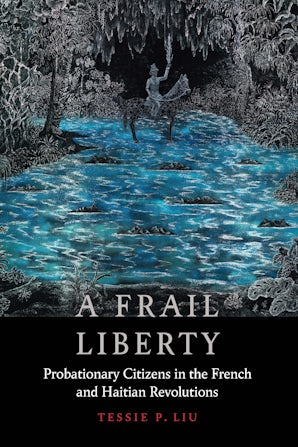
A Frail Liberty : Probationary Citizens in the French and Haitian Revolutions, by Tessie P. Liu ; Series: France Overseas: Studies in Empire and Decolonization
A Frail Liberty traces the paradoxical actions of the first French abolitionist society, the Société des Amis des Noirs (Society of the Friends of Blacks), at the juncture of two unprecedented achievements of the revolutionary era: the extension of full rights of citizenship to qualifying free men of color in 1792 and the emancipation decree of 1794 that simultaneously declared the formerly enslaved to be citizens of France. This society helped form the revolution’s notion of color-blind equality yet did not protest the pro-slavery attack on the new citizens of France. Tessie P. Liu prioritizes the understanding of the elite insiders’ vision of equality as crucial to understanding this dualism.
By documenting the link between outright exclusion and political inclusion and emphasizing that a nation’s perceived qualifications for citizenship formulate a particular conception of racial equality, Liu argues that the treatment and status distinctions between free people of color and the formerly enslaved parallel the infamous divide between “active” and “passive” citizens. These two populations of colonial citizens with African ancestry then must be considered part of the normative operations of French citizenship at the time. Uniquely locating racial differentiation in the French and Haitian revolutions within the logic and structures of political representation, Liu deepens the conversation regarding race as a civic identity within democratic societies.
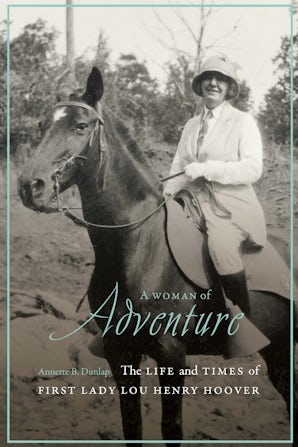
A Woman of Adventure : The Life and Times of First Lady Lou Henry Hoover, by Annette B. Dunlap.
When Lou Henry married Herbert Hoover in February 1899, she looked forward to a partnership of equality and a life of adventure. She could fire a rifle and sit a horse as well as any man. The Quaker community of Whittier, California, where she lived as a teen, reinforced the egalitarian spirit of her upbringing. But history had other ideas for Lou Henry Hoover.
For the first fifteen years of married life, Lou globe-trotted with her husband as he pursued a lucrative career in mining engineering and consulting. World War I not only changed the map of the world, it changed the map of the Hoovers’ marriage. Herbert Hoover’s Commission for the Relief of Belgium launched him into a political career that led to the White House. Lou, who detested the limelight, led a dual life: she supported her husband’s political career, managed their multiple households, and saw to the needs of their family. Behind the scenes, she pursued her own interests.
History has long since forgotten the breadth of her achievements, but Lou Henry Hoover’s powerful legacy endures in the ongoing success of the Girl Scouts, the music and physical therapy degree programs at Stanford University, athletic opportunities for women, and the countless unknown men and women who received an education thanks to Lou’s anonymous financial support.
Conveying Lou’s humor, personality, and intelligence, A Woman of Adventure takes a fresh look at the first lady who preceded Eleanor Roosevelt and her also-extraordinary accomplishments.
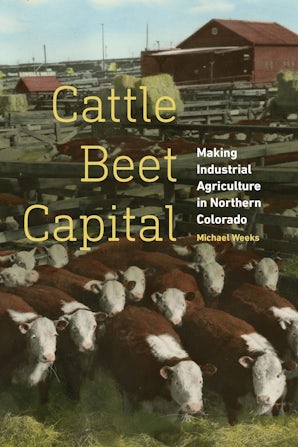
Cattle Beet Capital : Making Industrial Agriculture in Northern Colorado, by Michael Weeks.
In 1870 several hundred settlers arrived at a patch of land at the confluence of the South Platte and Cache la Poudre Rivers in Colorado Territory. Their planned agricultural community, which they named Greeley, was centered around small landholdings, shared irrigation, and a variety of market crops. One hundred years later, Greeley was the home of the world’s largest concentrated cattle-feeding operation, with the resources of an entire region directed toward manufacturing beef. How did that transformation happen? Cattle Beet Capital is animated by that question.
Expanding outward from Greeley to all of northern Colorado, Cattle Beet Capital shows how the beet sugar industry came to dominate the region in the early twentieth century through a reciprocal relationship with its growers that supported a healthy and sustainable agriculture while simultaneously exploiting tens of thousands of migrant laborers. Michael Weeks shows how the state provided much of the scaffolding for the industry in the form of tariffs and research that synchronized with the agendas of industry and large farmers. The transformations that led to commercial feedlots began during the 1930s as farmers replaced crop rotations and seasonal livestock operations with densely packed cattle pens, mono-cropped corn, and the products pouring out of agro-industrial labs and factories. Using the lens of the northern Colorado region, Cattle Beet Capital illuminates the historical processes that made our modern food systems.
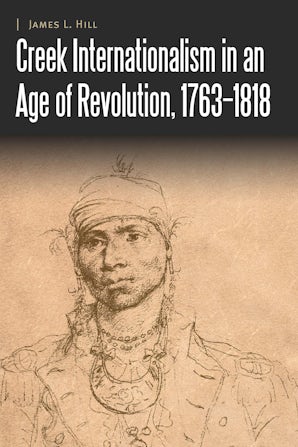
Creek Internationalism in an Age of Revolution, 1763–1818, by James L. Hill ; Series: Borderlands and Transcultural Studies
Creek Internationalism in an Age of Revolution, 1763–1818 examines how Creek communities and their leaders remained viable geopolitical actors in the trans-Appalachian West well after the American Revolution. The Creeks pursued aggressive and far-reaching diplomacy between 1763 and 1818 to assert their territorial and political sovereignty while thwarting American efforts to establish control over the region. The United States and the Creeks fought to secure recognition from the powers of Europe that would guarantee political and territorial sovereignty: the Creeks fought to maintain their connections to the Atlantic world and preserve their central role in the geopolitics of the trans-Appalachian West, while the American colonies sought first to establish themselves as an independent nation, then to expand borders to secure diplomatic and commercial rights.
Creeks continued to forge useful ties with agents of European empires despite American attempts to circumscribe Creek contact with the outside world. The Creeks’ solicitation of trade and diplomatic channels with British and Spanish colonists in the West Indies, Canada, and various Gulf Coast outposts served key functions for defenders of local autonomy. Native peoples fought to preserve the geopolitical order that dominated the colonial era, making the trans-Appalachian West a kaleidoscope of sovereign peoples where negotiation prevailed. As a result, the United States lacked the ability to impose its will on its Indigenous neighbors, much like the European empires that had preceded them. Hill provides a significant revisionist history of Creek diplomacy and power that fills gaps within the broader study of the Atlantic world and early American history to show how Indigenous power thwarted European empires in North America.
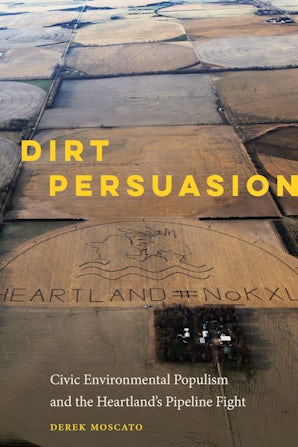
Dirt Persuasion : Civic Environmental Populism and Heartland’s Pipeline Fight, by Derek Moscato.
Dirt Persuasion examines a watershed moment in U.S. environmental politics: the fight over the Keystone XL Pipeline. The complex interplay of resources extraction industries with grassroots environmentalism and advocacy has transformed the role of activists in the contemporary public sphere. Bold Nebraska’s years-long fight against pipeline company TransCanada provides a compelling case study: a contemporary state-level organization that simultaneously challenged political and business leaders in its home state of Nebraska, at the national level in the United States, and in the foreign jurisdiction of Canada.
Dirt Persuasion sheds light not only on the activism practices of social movements but also on the changing environments in which such actions are deployed. The KXL Pipeline fight represents a watershed moment both for U.S. energy politics and in the communication of environmental activism. The rural dimension of this environmental saga is critical: environmentalism must be understood from the perspective of the rural Americans who coexist with one of the planet’s most delicate ecologies. Populism, rhetorical appeals, strategic advocacy framing, and media framing all factor prominently within the pipeline debate—leading to a civic environmental persuasion built on the attributes of narrative, engagement, hyperlocalization, and bipartisanship in order to build broad stakeholder support and influence public policy.
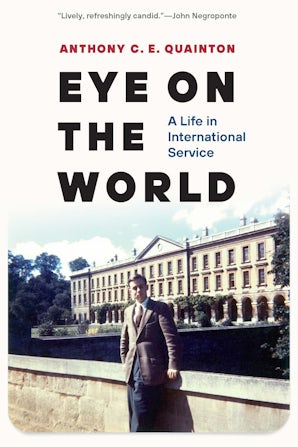
Eye on the World : A Life in International Service, by Anthony C. E. Quainton.
Eye on the World is the autobiography of diplomat Anthony C. E. Quainton, the story of a long and varied life lived in eleven countries on six continents. Rather than a formal history, this is Quainton’s reflection on his interactions with the events of those times, beginning with George VI’s historic visit to North America in 1939, through the years of the Cold War, the efforts to contain and then defeat the Soviet Union, and finally the two decades of uneasy peace that came after the fall of the Berlin Wall. To some of these events Quainton was merely a spectator. In other areas—India, Nicaragua, Kuwait, and Peru—he was actively involved either as a participant in the policy process in Washington or as the senior representative of the United States in those countries.
Spanning his upbringing and education through two decades after his retirement, Quainton describes the expanding horizons of a middle-class boy from the northwest corner of North America as he encountered the complexity of the world in which he spent his professional life. Quainton served in seven different presidential appointments under presidents Gerald Ford, Jimmy Carter, Ronald Reagan, George H. W. Bush, and Bill Clinton. These included four ambassadorships in distinct parts of the world and three assistant secretary–level posts in Washington. This range of geographic and functional assignments was unique in his generation of Foreign Service officers.
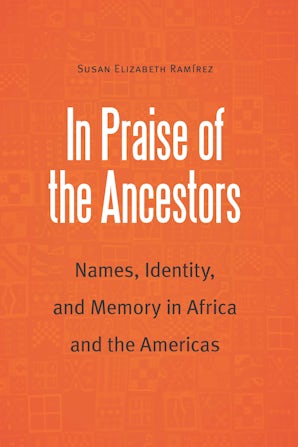
In Praise of the Ancestors : Names, Identity, and Memory in Africa and the Americas, by Susan Elizabeth Ramirez ; Series: Borderlands and Transcultural Studies
Apart from collective memories of lived experiences, much of the modern world’s historical sense comes from written sources stored in the archives of the world, and some scholars in the not-so-distant past have described unlettered civilizations as “peoples without history.” In Praise of the Ancestors is a revisionist interpretation of early colonial accounts that reveal incongruities in accepted knowledge about three Native groups.
Susan Elizabeth Ramírez reevaluates three case studies of oral traditions using positional inheritance—a system in which names and titles are inherited from one generation by another and thereby contribute to the formation of collective memories and a group identity. Ramírez begins by examining positional inheritance and perpetual kinship among the Kazembes in central Africa from the eighteenth to the mid-twentieth centuries. Next, her analysis moves to the Native groups of the Iroquois Confederation and their practice of using names to memorialize remarkable leaders in the seventeenth and eighteenth centuries. Finally, Ramírez surveys naming practices of the Andeans, based on sixteenth-century manuscript sources and later testimonies found in Spanish and Andean archives, questioning colonial narratives by documenting the use of this alternative system of memory perpetuation, which was initially unrecognized by the Spaniards.
In the process of reexamining the histories of Native peoples on three continents, Ramírez broaches a wider issue: namely, understanding of the nature of knowledge as fundamental to understanding and evaluating the knowledge itself.
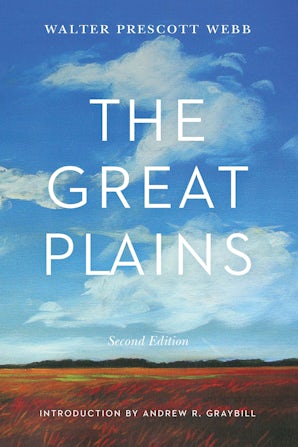
The Great Plains, 2nd ed., by Walter Prescott Webb.
This iconic description of the interaction between the vast central plains of the continent and the white Americans who moved there in the mid-nineteenth century has endured as one of the most influential, widely known, and controversial works in western history since its first publication in 1931. Arguing that “the Great Plains environment . . . constitutes a geographic unity whose influences have been so powerful as to put a characteristic mark upon everything that survives within its borders,” Walter Prescott Webb identifies the revolver, barbed wire, and the windmill as technological adaptations that facilitated Anglo conquest of the arid, treeless region. Webb draws on history, anthropology, geography, demographics, climatology, and economics in arguing that the 98th Meridian constitutes an institutional fault line at which “practically every institution that was carried across it was either broken and remade or else greatly altered.”
This new edition of one of the foundational works of western American history features an introduction by Great Plains historian Andrew R. Graybill and a new index and updated design.
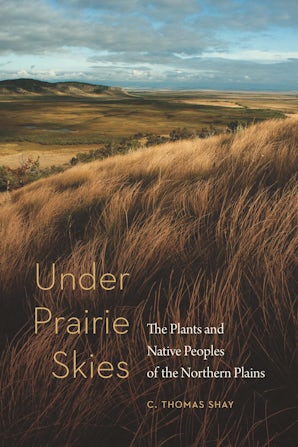
Under Prairie Skies : The Plants and Native Peoples of the Northern Plains, by C. Thomas Shay.
In Under Prairie Skies, C. Thomas Shay asks and answers the question, What role did plants play in the lives of early inhabitants of the northern Great Plains? Since humans arrived at the end of the Ice Age, plants played important roles as Native peoples learned which were valuable foods, which held medicinal value, and which were best for crafts.
Incorporating Native voices, ethnobotanical studies, personal stories, and research techniques, Under Prairie Skies shows how, since the end of the Ice Age, plants have held a central place in the lives of Native peoples. Eventually some groups cultivated seed-bearing annuals and, later, fields of maize and other crops. Throughout history, their lives became linked with the land, both materially and spiritually.
**Pictures and Synopses courtesy of University of Nebraska Press.
Get Internet : The Affordable Connectivity Program (ACP)
Learn how President Biden is reducing the cost of high-speed internet and find out if you qualify to sign up.
As part of the Bipartisan Infrastructure Law, President Biden and Vice President Harris worked with Democrats, Republicans, and Independents to create the Affordable Connectivity Program (ACP), which provides eligible households $30 per month off their internet bills. To deliver maximum cost savings to families, the Biden-Harris Administration has secured commitments from 20 leading internet providers to offer ACP-eligible households a high-speed internet plan for no more than $30 per month. Eligible families who pair their ACP benefit with one of these plans can receive high-speed internet at no cost.
Find Out If You Qualify
There are three different ways to qualify for the ACP benefit. You are eligible if you meet any one of the three qualifications below:
- Your income is at or below 200% of the Federal Poverty Guidelines (see chart below)
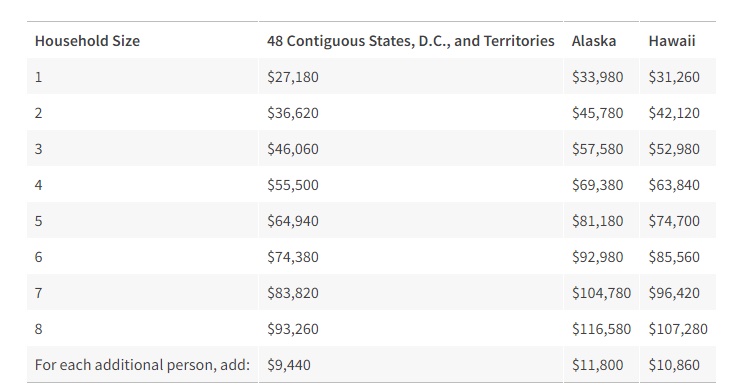
- You or someone in your household participates in one of these other programs:
- Supplemental Nutrition Assistance Program (SNAP), formerly known as Food Stamps
- Medicaid
- Special Supplemental Nutrition Program for Women, Infants, and Children (WIC)
- Supplemental Security Income (SSI)
- Federal Public Housing Assistance (FPHA)
- Veterans Pension and Survivors Benefit
- Free and Reduced-Price School Lunch Program or School Breakfast Program, including at U.S. Department of Agriculture (USDA) Community Eligibility Provision schools
- Federal Pell Grant (received in the current award year)
- Lifeline
- Certain Tribal assistance programs, including Bureau of Indian Affairs General Assistance, Head Start (only households meeting the income qualifying standard), Tribal Temporary Assistance for Needy Families (Tribal TANF), and Food Distribution Program on Indian Reservations
- You meet the eligibility criteria for a participating broadband provider’s existing low-income internet program.
How To Sign Up for the Affordable Connectivity Program
Step 1: Claim Your Affordable Connectivity Program Benefit.
- You can send in an application by mail:
- You can sign up through your existing internet service provider if it participates in the program. Participating companies may ask you to apply through their company’s own application process.
Step 2: Contact a participating internet service provider to choose an internet plan.
- Once your application is approved, contact a participating internet service provider to choose a plan and apply your benefit to that plan.
- More information on how to apply can be found at https://acpbenefit.org/how-to-apply/ or by calling (877) 384-2575.
Participating Service Providers
These internet service providers offer a high-speed internet plan for $30 per month or less. If you apply your ACP benefit to one of these plans, you will have no out-of-pocket cost for internet.
- Allo Communications
- AltaFiber (and Hawaiian Telecom)
- Altice (Optimum and Suddenlink)
- Astound
- AT&T
- Breezeline
- Comcast
- Comporium
- Cox Communications
- Frontier
- IdeaTek
- Jackson Energy Authority
- Mediacom
- MLGC
- Spectrum (Charter Communications)
- Starry
- Verizon (Fios only)
- Vermont Telephone Company
- Vexus Fiber
- Wow! Internet, Cable and TV
You can also choose to apply your ACP benefit to a different provider. There are over 1,300 providers that accept the ACP benefit. To find one near you, visit https://acpbenefit.org/companies-near-me/.
Frequently Asked Questions (FAQs)
What if I also need help getting a tablet or computer?
ACP-eligible households can also receive a one-time discount of up to $100 to purchase a laptop, desktop computer, or tablet from certain participating providers, with a small copay. To get a discounted device, contact a participating provider. The providers offering discounted devices are listed at https://www.fcc.gov/affordable-connectivity-program-providers
How much is my Affordable Connectivity Program benefit?
Most eligible families can receive a benefit of up to $30 per month applied to the cost of their internet service. ACP-eligible households who live on Tribal lands are eligible for a benefit of up to $75 per month.
Are these plans fast?
Yes – they offer a minimum of 100 Mbps download speed, which is fast enough for a typical family of 4 to video conference, stream movies or TV, and more.
What’s Up Doc? New State Agency Publications at the Nebraska Library Commission

New state agency publications have been received at the Nebraska Library Commission for April 2022. Included are reports from the Nebraska Legislature, the Nebraska Department of Natural Resources, the Nebraska Department of Correctional Services, the Nebraska Department of Transportation, and new books from the University of Nebraska Press, to name a few.
Most items, except the books from the University of Nebraska Press, are available for immediate viewing and printing by clicking on the highlighted link above, or directly in the .pdf below. You can read synopses of the books received from the University of Nebraska Press in the Book Briefs blogposts.
The Nebraska Legislature created the Nebraska Publications Clearinghouse in 1972 as a service of the Nebraska Library Commission. Its purpose is to collect, preserve, and provide access to all public information published by Nebraska state agencies. By law (State Statutes 51-411 to 51-413) all Nebraska state agencies are required to submit their published documents to the Clearinghouse. For more information, visit the Nebraska Publications Clearinghouse page, contact Mary Sauers, Government Information Services Librarian; or contact Bonnie Henzel, State Documents Staff Assistant.
What’s Up Doc? 2021 State Agency Publications at the Nebraska Library Commission

State agency publications received at the Nebraska Library Commission for 2021 are listed below. Included are reports from the Nebraska Department of Agriculture, the Nebraska Department of Economic Development, the Nebraska Department of Education, the Nebraska Game & Parks Commission, and new books from the University of Nebraska Press, to name a few.
Most items, except the books from the University of Nebraska Press, are available for immediate viewing and printing by clicking on the highlighted link above, or directly in the .pdf below. You can read synopses of the books received from the University of Nebraska Press in the Book Briefs blogposts.
The Nebraska Legislature created the Nebraska Publications Clearinghouse in 1972 as a service of the Nebraska Library Commission. Its purpose is to collect, preserve, and provide access to all public information published by Nebraska state agencies. By law (State Statutes 51-411 to 51-413) all Nebraska state agencies are required to submit their published documents to the Clearinghouse. For more information, visit the Nebraska Publications Clearinghouse page, contact Mary Sauers, Government Information Services Librarian; or contact Bonnie Henzel, State Documents Staff Assistant.
Friday Reads: “Go Tell the Bees That I Am Gone” by Diana Gabaldon
I have been a huge fan of time travel fiction, historical fiction, and medical fiction for a very long time, and the Outlander series by Diana Gabaldon, tops my list of all three of these genres. The 9th book in the series, Go Tell the Bees That I Am Gone (2021), is her latest installment in this sweeping saga. I am also a huge fan of the Outlander TV series, currently having just concluded season 6, with each season roughly matching each book. Because it had been 8 years since the previous book, I went back and listened to books 6, 7, and 8–before diving into book 9. As always, it did not disappoint!
For those new to the series, Claire Beauchamp Randall, a WWII British Army nurse, falls through standing stones (similar to Stonehenge) in 1946, and lands in 1743 Scotland, where she meets Jamie Fraser, a twenty-something red-haired Scots warrior and laird. Claire, while trying to figure out how to get back to her own time and husband, is protected by Jamie, and they fall in love. Together they must survive clan wars, British Redcoats, injuries, starvation, and French intrigue as they come ever closer to Culloden–the Jacobite Rising battle that would determine the fate of Highlands culture and possibly the throne of Great Britain. Through all of these circumstances, Claire uses her medical knowledge to help any and all in need. Immediately before Culloden, Jamie sends Claire back through the stones to her own time–back to her husband Frank. For the next twenty years, Claire believes Jamie to be dead at Culloden, and not until Frank dies does she begin to suspect that Jamie might still be alive in the past. Eventually Claire and Jamie are reunited, and their adventures together in 18th century Scotland, the Caribbean, and the American Colonies are a great read. That brings us to Book 9–Go Tell the Bees That I Am Gone.
It is now 1779, and Claire and Jamie have been settled for awhile on Fraser’s Ridge, North Carolina, along with their daughter Brianna and her family, friends, and other refugees from Scotland. They have built a solid life–Jamie as a land owner, and Claire as a healer. Independence from Great Britain has been declared, but loyalties are split across all of the colonies, even on Fraser’s Ridge. As the Revolutionary War rages from New York to Georgia, Jamie and Claire need to once again stay closely bonded to survive–through war, fire, disease, injuries, death, and someone special from Jamie’s past. As always, a wonderful historical fiction saga with a great set up at the end for book 10. I can’t wait!
Posted in Books & Reading, General, Information Resources
Tagged books, Friday Reads, Reading
Leave a comment
Book Briefs: New University of Nebraska Press Books at the Nebraska Publications Clearinghouse
The Nebraska Publications Clearinghouse receives documents every month from all Nebraska state agencies, including the University of Nebraska Press (UNP). Each month we will be showcasing the UNP books that the Clearinghouse has received.
UNP books, as well as all Nebraska state documents, are available for checkout by libraries and librarians for their patrons.
Here are the UNP books the Clearinghouse received in April 2022:
The Comic Book Western : New Perspectives on a Global Genre, Edited by Christopher Conway and Antoinette Sol ; Series: Postwestern Horizons
One of the greatest untold stories about the globalization of the Western is the key role of comics. Few American cultural exports have been as successful globally as the Western, a phenomenon commonly attributed to the widespread circulation of fiction, film, and television. The Comic Book Western centers comics in the Western’s international success. Even as readers consumed translations of American comic book Westerns, they fell in love with local ones that became national or international sensations.
These essays reveal the unexpected cross-pollinations that allowed the Western to emerge from and speak to a wide range of historical and cultural contexts, including Spanish and Italian fascism, Polish historical memory, the ideology of shōjo manga from Japan, British post-apocalypticism and the gothic, race and identity in Canada, Mexican gender politics, French critiques of manifest destiny, and gaucho nationalism in Argentina. The vibrant themes uncovered in The Comic Book Western teach us that international comic book Westerns are not hollow imitations but complex and aesthetically powerful statements about identity, culture, and politics.
Feminist Formalism and Early Modern Women’s Writing. Edited and with an introduction by Lara Dodds and Michelle M. Dowd ; Series: Women and Gender in the Early Modern World
Feminist Formalism and Early Modern Women’s Writing reexamines the relationship between gender and form in early modern women’s writing in essays that elaborate the specific literary strategies of women writers, that examine women’s debts to and appropriations of different literary genres, and that offer practical suggestions for the teaching of women’s texts in several different contexts. Contributors explore the possibility of feminist formalism, a methodology that both attends to the structural, rhetorical, and other formal techniques of a given text and takes gender as a central category of analysis. This collection contends that feminist formalism is a useful tool for scholars of the early modern period and for literary studies more broadly because it marries the traditional questions of formalism—including questions of style, genre, and literary history—with the political and cultural concerns of feminist inquiry.
Contributors reposition works by important women writers—such as Margaret Cavendish, Hester Pulter, Mary Wroth, and Katherine Philips—as central to the development of English literary tradition. By examining a variety of texts written by women, including recipes, emblems, exchanges, and poetry, Feminist Formalism and Early Modern Women’s Writing contributes to existing scholarship on early modern women’s writing while extending it in new and important directions.
History of Theory and Method in Anthropology. By Regna Darnell ; Series: Critical Studies in the History of Anthropology
Regna Darnell offers a critical reexamination of the theoretical orientation of the Americanist tradition, centered on the work of Franz Boas, and the professionalization of anthropology as an academic discipline in the United States in the late nineteenth and early twentieth centuries. History of Theory and Method in Anthropology reveals the theory schools, institutions, and social networks of scholars and fieldworkers primarily interested in the ethnography of North American Indigenous peoples. Darnell’s fifty-year career entails foundational writings in the four fields of the discipline: cultural anthropology, ethnography, linguistics, and physical anthropology.
Leading researchers, theorists, and fieldwork subjects include Claude Lévi-Strauss, Franz Boas, Benjamin Lee Whorf, John Wesley Powell, Frederica de Laguna, Dell Hymes, George Stocking Jr., and Anthony F. C. Wallace, as well as nineteenth-century Native language classifications, ethnography, ethnohistory, social psychology, structuralism, rationalism, biologism, mentalism, race science, human nature and cultural relativism, ethnocentrism, standpoint-based epistemology, collaborative research, and applied anthropology. History of Theory and Method in Anthropology is an essential volume for scholars and undergraduate and graduate students to enter into the history of the inductive theory schools and methodologies of the Americanist tradition and its legacies.
Liverpool to Great Salt Lake : the 1851 Journal of Missionary George D. Watt. Edited by LaJean Purcell Carruth & Ronald G. Watt, Transcription by LaJean Purcell Carruth.
George Darling Watt was the first convert of the Church of Jesus Christ of Latter-day Saints baptized in the British Isles. He emigrated to Nauvoo, Illinois, in 1842. He returned to the British Isles in 1846 as a missionary, accompanied by his wife and young son. He remained there until 1851, when he led a group of emigrant converts to Salt Lake City, Utah. Watt recorded his journey from Liverpool to Chimney Rock in Pitman shorthand. Remarkably, his journal wasn’t discovered until 2001—and is transcribed and appearing for the first time in this book.
Watt’s journal provides an important glimpse into the transatlantic nature of Latter-day Saint migration to Salt Lake City. In 1850 there were more Latter-day Saints in England than in the United States, but by 1890 more than eighty-five thousand converts had crossed the Atlantic and made their way to Salt Lake City. Watt’s 1851 journal opens a window into those overseas, riverine, and overland journeys. His spirited accounts provide wide-ranging details about the births, marriages, deaths, Sunday sermons, interpersonal relations, weather, and food and water shortages of the journey, as well as the many logistical complexities.
Making the Marvelous : Marie-Catherine d’Aulnoy, Henriette-Julie Murat, and the Literary Representation of the Decorative Arts. By Rori Bloom ; Series: Early Modern Cultural Studies
At a moment when France was coming to new prominence in the production of furniture and fashion, the fairy tales of Marie-Catherine d’Aulnoy (1652–1705) and Henriette-Julie de Murat (1670–1716) gave pride of place to richly detailed descriptions of palaces, gardens, clothing, and toys. Through close readings of these authors’ descriptive prose, Rori Bloom shows how these practitioners of a supposedly minor genre made a major contribution as chroniclers and critics of the decorative arts in Old Regime France. Identifying these authors’ embrace of the pretty and the playful as a response to a frequent critique of fairy tales as childish and feminine, Making the Marvelous demonstrates their integration of artisan’s work, child’s play, and the lady’s toilette into a complex vision of creativity. D’Aulnoy and Murat changed the stakes of the fairy tale, Bloom argues: instead of inviting their readers to marvel at the magic that changes rags to riches, they enjoined them to acknowledge the skill that transforms raw materials into beautiful works of art.
Unconquerable : the Story of John Ross, Chief of the Cherokees, 1828-1866. Edited and with an introduction by Lionel Larre’.
Unconquerable is John Milton Oskison’s biography of John Ross, written in the 1930s but unpublished until now. John Ross was principal chief of the Cherokees from 1828 to his death in 1866. Through the story of John Ross, Oskison also tells the story of the Cherokee Nation through some of its most dramatic events in the nineteenth century: the nation’s difficult struggle against Georgia, its forced removal on the Trail of Tears, its internal factionalism, the Civil War, and the reconstruction of the nation in Indian Territory west of the Mississippi.
Ross remains one of the most celebrated Cherokee heroes: his story is an integral part not only of Cherokee history but also of the history of Indian Territory and of the United States. With a critical introduction by noted Oskison scholar Lionel Larré, Unconquerable sheds light on the critical work of an author who deserves more attention from both the public and scholars of Native American studies.
The Winning Ticket : Uncovering America’s Biggest Lottery Scam. By Rob Sand with Reid Forgrave.
The Winning Ticket is an inside look at one of the most complicated yet seat-of-your-pants financial investigations and prosecutions in recent history. Rob Sand, the youngest attorney in his office, was assigned a new case by his boss, who was days away from retirement. Inside the thin accordion binder Sand received was meager evidence that had been gathered over the course of two years by Iowa authorities regarding a suspicious lottery ticket. No one expected the case to go anywhere. No dead body, no shots fired, and no money paid out. Why should they care? There was no certainty that a crime had even been committed. But a mysterious Belizean trust had attempted to claim the $16 million ticket, then decided to forgo the money and maintain anonymity when the State of Iowa demanded to know who had purchased the ticket. Who values anonymity over that much money?
Both a story of small-town America and a true-crime saga about the largest lottery-rigging scheme in American history, The Winning Ticket follows the investigation all the way down the rabbit hole to uncover how Eddie Tipton was able to cheat the system to win jackpots over $16 million and go more than a decade without being caught—until Sand inherited the case.
Just as remarkable as the crime are the real-life characters met along the way: an honest fireworks salesman, a hoodwinked FBI agent, a crooked Texas lawman, a shady attorney representing a Belizean trust, and, yes, Bigfoot hunters. While some of the characters are nearly unbelievable, the everyday themes of integrity and hard work resonate throughout the saga. As the case builds toward a reckoning, The Winning Ticket demonstrates how a new day has dawned in prosecuting complex technological crimes.
**Synopses courtesy of University of Nebraska Press.
A Stroke of Genealogy: Searching U.S. Census Bureau Records
The release of the 1950 Census records is scheduled for April 1, 2022. Whether you are conducting genealogy research or just interested in finding census records about family members, working with historical records from the U.S. Census Bureau is a multi-step process.
A Stroke of Genealogy will walk you through these steps and introduce you to many important resources for accessing and using these records, including the 1950 Census of Population records.
Part 1 and 2 of A Stroke of Genealogy will share background information on the Census Bureau, U.S. National Archives and Records Administration (NARA), the 1950 Census questionnaire, and more, preparing you to access the records from NARA on or after April 1, 2022.
On April 1, 2022, Part 3 of this course will be released and show in detail how to access records from, locate, and view census schedules, enumeration district maps, and descriptions.
Who should take this course?
This course is designed for historians, genealogists, researchers and anyone who is interested in learning how to use census records for genealogical research using the 1950 census data.
To view Modules 1 and 2, click on the following links, then scroll down:
- Module 1 | A Stroke of Genealogy: Starting Your Search | 5:36
- Module 2 | A Stroke of Genealogy: Census Schedules and Records | 9:01
- Module 3 | A Stroke of Genealogy: Accessing Genealogy Research Resources | Coming on April 1, 2022.
Instructor
Noemi Mendez
Data Dissemination Specialist
U.S. Census Bureau
What’s Up Doc? New State Agency Publications at the Nebraska Library Commission

New state agency publications have been received at the Nebraska Library Commission for January, February, and March 2022. Included are reports from the Nebraska Department of Agriculture, the Nebraska Department of Economic Development, the Nebraska Department of Education, the Nebraska Game & Parks Commission, and new books from the University of Nebraska Press, to name a few.
Most items, except the books from the University of Nebraska Press, are available for immediate viewing and printing by clicking on the highlighted link above, or directly in the .pdf below. You can read synopses of the books received from the University of Nebraska Press in the Book Briefs blogposts.
The Nebraska Legislature created the Nebraska Publications Clearinghouse in 1972 as a service of the Nebraska Library Commission. Its purpose is to collect, preserve, and provide access to all public information published by Nebraska state agencies. By law (State Statutes 51-411 to 51-413) all Nebraska state agencies are required to submit their published documents to the Clearinghouse. For more information, visit the Nebraska Publications Clearinghouse page, contact Mary Sauers, Government Information Services Librarian; or contact Bonnie Henzel, State Documents Staff Assistant.
















































